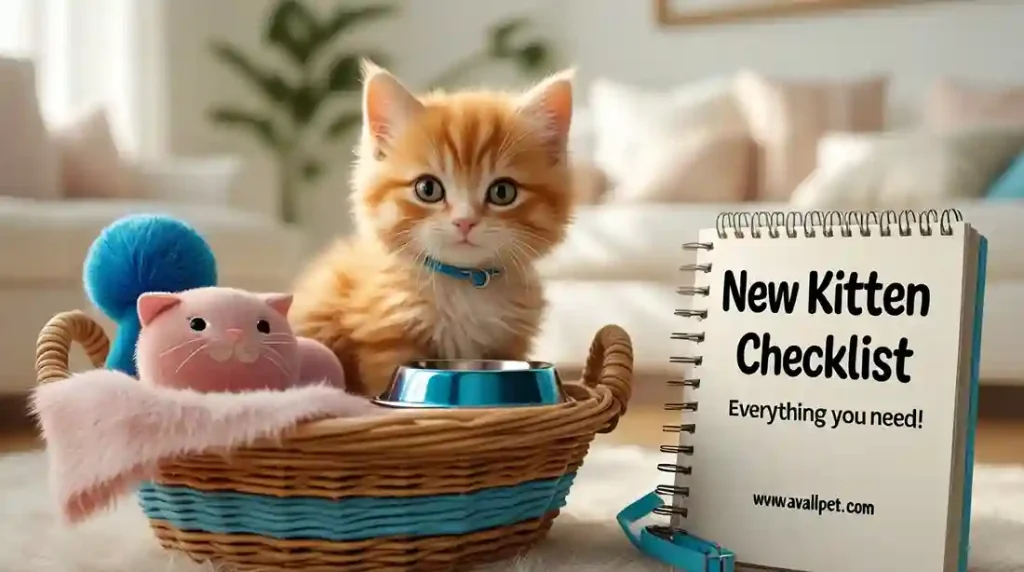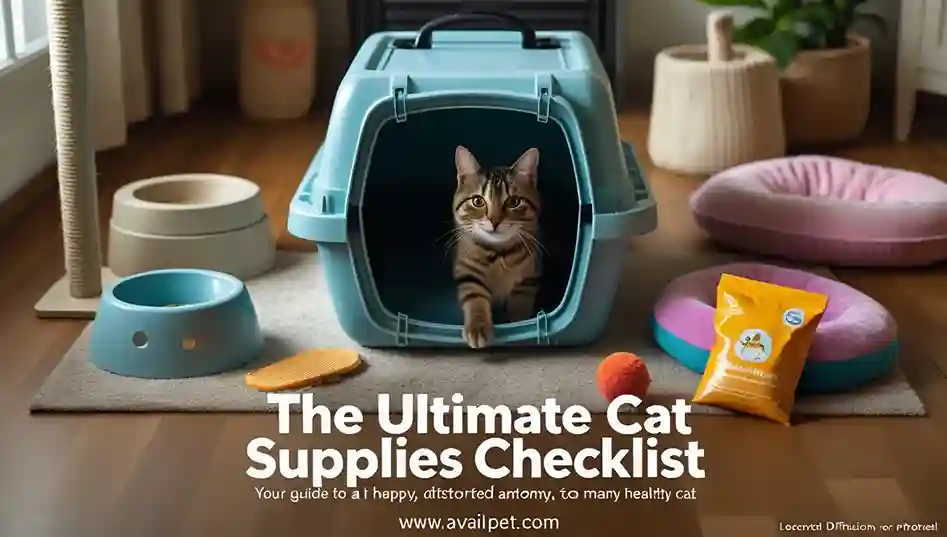Bringing a cat into your family is a decision filled with excitement and the promise of purrs, playtime, and a new furry best friend for your children. But in a home filled with the joyful chaos of little ones—sudden noises, enthusiastic hugs, and unpredictable energy—not every cat is cut out for the job. Choosing the right feline companion is more than just a matter of preference; it’s about finding a temperament that thrives in the heart of family life, ensuring safety and happiness for both your children and your new pet.
This definitive guide is designed to take the guesswork out of your search. We’ve compiled our list of the best cat breeds for families based on key traits like gentleness, patience, and playful sociability, with insights reviewed by our veterinary team. Our goal is to empower you with the knowledge to find a truly kid-safe cat, creating a bond that will enrich your family’s life for years to come.
Quick Comparison: 10 Top Family Cat Breeds at a Glance
| Breed | Best For | Temperament | Kid Friendliness | Grooming Needs | Activity Level |
| Ragdoll | Quiet homes, gentle cuddles | Placid, Affectionate, Gentle | Very High – The ultimate patient companion | Moderate (Regular brushing) | Low to Moderate |
| Maine Coon | Active families, “dog-like” pals | Friendly, Gentle, Playful | Very High – A gentle giant | High (Frequent brushing) | Moderate to High |
| Birman | Balanced family life | Sweet-Tempered, Gentle, Sociable | Very High – Patient and playful | Moderate (Weekly brushing) | Moderate |
| Abyssinian | Families with older kids | Energetic, Curious, Playful | High – A fun, interactive playmate | Low (Weekly brushing) | Very High |
| Scottish Fold | Adaptable, easy-going homes | Easy-Going, Affectionate, Adaptable | High – A calm, undemanding friend | Low to Moderate | Moderate |
| Domestic Shorthair | Budget-conscious adopters | Variable (Often well-balanced) | Variable (Often High) – A shelter gem | Low (Weekly brushing) | Variable |
| Burmese | Affectionate, lap-cat seekers | Sociable, People-Oriented, Playful | Very High – A true “velcro” cat | Low (Weekly brushing) | Moderate to High |
| British Shorthair | Calm, predictable households | Easy-Going, Calm, Affectionate | High – A sturdy and tolerant companion | Low (Weekly brushing) | Low |
| Siberian | Families with allergy concerns | Affectionate, Playful, Loyal | Very High – A robust and friendly forest cat | High (Frequent brushing) | Moderate to High |
| Exotic Shorthair | Fans of the Persian look with less upkeep | Calm, Sweet, Gentle | High – A placid and loving friend | Moderate (Daily face cleaning) | Low |
Key Takeaways
Before we dive into the detailed profiles, here are the most important insights from our comprehensive guide to help you find a safe and loving feline companion for your home:
- The best cat breeds for families are consistently characterized by their gentle patience, playful nature, and high tolerance for handling—key traits found in Ragdolls, Maine Coons, and Birmans.
- When evaluating family friendly cats, it’s crucial to match the breed’s energy level to your household; a calm British Shorthair suits a quieter home, while an energetic Abyssinian is perfect for active families with older children.
- Even the most recommended child safe cats require proper supervision and teaching children respectful pet interaction to ensure a harmonious relationship for everyone.
- Don’t overlook the Domestic Shorthair; shelter cats often possess wonderfully balanced temperaments and can be the perfect, kid safe cat for your situation.
- For families with allergy concerns, the Siberian is a standout choice among the best cat breeds for families, known for producing lower levels of the Fel d 1 allergen.
- A cat’s individual personality is just as important as its breed’s general traits. Spending time with a cat before committing is the best way to ensure a good fit.
What Makes a Cat Truly Family Friendly?
Choosing a cat for your family goes beyond finding a cute face. It’s about identifying a specific set of inherent personality traits that allow a cat to not just cope with, but thrive in a bustling family environment. While every cat is an individual, the most consistent family friendly cats share a core combination of behavioral characteristics that ensure a safe and joyful experience for both the pet and your children.
Based on expert insights and veterinary behavioral assessments, here are the non-negotiable traits of a kid safe cat:
A Gentle Temperament: This is the cornerstone. A gentle cat is less likely to react to a surprise hug or an accidental tail-pull with a scratch or a bite. Breeds known for this, like the Ragdoll, have a remarkably high threshold for irritation.
Patient and Tolerant: Family life is unpredictable. A patient cat can handle loud noises, sudden movements, and the sometimes-clumsy affections of a young child without becoming stressed or aggressive. This tolerance is what separates a good family pet from a more high-strung companion.
Playful Demeanor: A cat that enjoys interactive play is a fantastic source of fun and bonding for children. This playfulness should be directed towards toys, not hands, teaching children how to engage safely with their pet. An energetic, playful breed like the Abyssinian can be a wonderful playmate for older kids.
Sociable and People Oriented: Aloof or independent cats may find the constant interaction of a family overwhelming. A sociable cat seeks out the company of its humans, wants to be in the same room, and enjoys being part of the action. This makes them more likely to form strong bonds with all family members.
It’s crucial to remember that supervision is essential, regardless of the breed. Teaching your children how to respectfully interact with any animal is the most important step in ensuring a lifelong, positive relationship. The goal is to find a cat whose natural instincts align with your family’s lifestyle, creating a foundation of mutual trust and affection from day one.
In-Depth Profiles: The 10 Best Cat Breeds for Families
Now, let’s explore the detailed profiles of our top 10 recommended family friendly cats. Each profile includes key information to help you make an informed decision, from temperament to care needs.
1. Ragdoll: The Gentle Giant
- Temperament: Placid, affectionate, and famously relaxed. Ragdolls often go limp when held, hence their name.
- Why They’re Great for Kids: Their extremely patient and gentle nature means they rarely use their claws, making them ideal for families with young children. They are dedicated “people cats” that will follow their family from room to room.
- Care Considerations: Their semi-longhair coat requires regular brushing to prevent mats. They are strictly indoor cats. To manage their beautiful coat, we recommend using a slicker brush for long-haired cats.
2. Maine Coon: The Dog-Like Companion
- Temperament: Gentle, friendly, and often called “the dog of the cat world.”
- Why They’re Great for Kids: These giants are known for their sweet personalities and intelligence. They can be taught tricks and enjoy interactive play, making them fun companions for older children.
- Care Considerations: Their large, thick coat needs frequent grooming. They need space to play and climb. To make grooming easier, we recommend using a slicker brush designed for long-haired cats.
3. Birman: The Patient Playmate
- Temperament: Sweet-tempered, gentle, and sociable.
- Why They’re Great for Kids: Birmans are remarkably patient and form strong bonds with all family members. They are playful without being hyperactive.
- Care Considerations: Their silky coat is less prone to matting but still needs weekly brushing. Regular brushing is essential to prevent painful mats and tangles in their fur.
4. Abyssinian: The Energetic Entertainer
- Temperament: Energetic, curious, and playful.
- Why They’re Great for Kids: Perfect for active families with older children. They love to play fetch and explore, making them entertaining companions. Shop interactive puzzle toys for active breeds.
- Care Considerations: This breed requires lots of mental and physical stimulation.
5. Scottish Fold: The Adaptable Friend
- Temperament: Easy-going, affectionate, and adaptable.
- Why They’re Great for Kids: Known for their calm nature and unique appearance. They enjoy being involved in family activities without being demanding. Shop interactive puzzle toys for active breeds
- Care Considerations: Source from reputable breeders due to potential joint issues associated with the folded ear gene.
6. Domestic Shorthair: The Shelter Superstar
- Temperament: Variable, but often wonderfully balanced.
- Why They’re Great for Kids: Many shelter cats have ideal temperaments for families. Adult cats’ personalities are already developed, ensuring a good match.
- Care Considerations: Needs depend on individual background. Shelter staff can provide valuable insights.
7. Burmese: The Affectionate Shadow
- Temperament: Sociable, people oriented, and playful.
- Why They’re Great for Kids: They form strong attachments and want to be involved in everything, making them great for families seeking constant companionship.
- Care Considerations: They don’t like being left alone for long periods.
8. British Shorthair: The Calm Companion
- Temperament: Easy-going, calm, and affectionate.
- Why They’re Great for Kids: Their sturdy build and tolerant nature make them good with respectful children. They’re content with quieter households.
- Care Considerations: Prone to obesity; need portion control and regular exercise. Browse portion control feeders for weight management.
9. Siberian: The Hypoallergenic Family Cat
- Temperament: Affectionate, playful, and loyal.
- Why They’re Great for Kids: Known for being good with children and other pets. Their triple-layer coat produces less of the Fel d 1 allergen.
- Care Considerations: Their thick coat requires frequent grooming, especially during shedding seasons. See our top-rated deshedding tools for frequent grooming.
10. Exotic Shorthair: The Low-Maintenance Persian
- Temperament: Calm, sweet, and gentle.
- Why They’re Great for Kids: They have the Persian’s placid personality but with easier grooming needs. They’re loving but not overly demanding.
- Care Considerations: Their flat faces require daily cleaning to prevent tear stain buildup.
Breeds to Cautiously Consider with Young Children
While many cats can be wonderful pets, some breeds have inherent traits that may pose challenges in a busy household with young children. Being aware of these tendencies isn’t a criticism of these breeds—it’s about making an informed match to ensure both your family and the cat thrive.
Important Note: This doesn’t mean these breeds can’t be great pets. It means they often require a more specific home environment, often with older children or adults who understand their unique needs.
Siamese:
- Why Caution is Advised: Extremely vocal and demanding of attention. Their loud, persistent meows can be overwhelming for naptime or quiet households. They can become stressed or destructive if ignored and may not tolerate clumsy handling from toddlers.
- Better Fit For: Families with older children who can engage in interactive play and conversation.
Bengal:
- Why Caution is Advised: Bred from wild Asian leopard cats, they have immense, high-octane energy and need constant stimulation. They are incredibly intelligent and can become destructive out of boredom. Their play can be very rough and “bitey,” which is not suitable for young kids.
- Better Fit For: Extremely active households with experienced cat owners and no small children; they need a dedicated playmate.
Persian (and Himalayan):
- Why Caution is Advised: Their primary challenge is maintenance. Their long, luxurious coats mat easily and require daily grooming—a stressful ordeal for both cat and child. Their brachycephalic (flat) faces lead to breathing issues and require daily eye cleaning. They are very calm but can be fragile.
- Better Fit For: Quiet, calm homes where adults can manage their significant grooming needs.
Russian Blue:
- Why Caution is Advised: Often shy and reserved around strangers and loud noises. They tend to bond deeply with one or two people and may hide when company—or a noisy group of children—is over. They are not typically aggressive, but they will retreat from chaos.
- Better Fit For: A quieter, more predictable family environment.
Beyond Breed: The Case for Adopting an Adult Cat
While choosing one of the best cat breeds for families is a popular path, there is another, often overlooked option that can be even more reliable for a household with children: adopting an adult cat from a shelter or rescue.
When you bring a kitten home, you are making a guess about its future personality. With an adult cat, what you see is what you get. Their temperament, energy level, and grooming needs are already fully established. This significantly de-risks the process of finding a truly kid safe cat.
Key Advantages of an Adult Cat:
- Known Personality: Shelter staff can provide detailed insights into a cat’s behavior. Is it gentle? Tolerant of handling? Good with other pets? This firsthand knowledge is invaluable.
- Calmer Demeanor: Adult cats are typically past the hyperactive, mischievous kitten phase. They are more likely to be calm, cuddly companions, perfect for a family seeking a relaxed pet.
- Lower Maintenance: They are already litter-trained, have passed the destructive chewing phase, and require less constant supervision than a curious kitten.
- A Rewarding Choice: You are giving a second chance to a loving animal in need, which is a powerful lesson in compassion for your children.
Your Family Cat Checklist: How to Choose
Before you finalize your decision, use this actionable checklist to ensure you’ve considered every factor for a successful match. This turns the overwhelming process of choosing the best cat breeds for families into a simple, step-by-step guide.
Assess Your Children’s Ages & Maturity:
- Toddlers (1-4): Prioritize a calm, patient, and gentle cat breed like a Ragdoll or British Shorthair that can tolerate unpredictable behavior.
- School-Age (5+): You can consider more active, playful breeds like an Abyssinian or Burmese that enjoy interactive games.
- Always plan for constant supervision, regardless of age.
Evaluate Your Family’s Activity Level:
- Quiet/Calm Home: Seek a low-energy cat (e.g., Persian, Exotic Shorthair).
- Active/Busy Home: A more energetic, playful cat (e.g., Maine Coon, Abyssinian) will fit right in.
Consider Allergies:
- If allergies are a concern, focus on breeds known for producing less of the Fel d 1 allergen, like the Siberian. Remember, no cat is 100% hypoallergenic. A high-quality air purifier can help manage allergens; compare top-rated models here.
Set a Realistic Budget:
- Factor in one-time costs (adoption fee, spay/neuter, initial supplies) and recurring costs (high-quality food, routine vet care, pet insurance, grooming). Being prepared is key—get a free pet insurance quote to understand potential costs and shop our recommended new cat checklist for all the essential supplies.
Decide: Kitten vs. Adult Cat:
- Kitten: Requires extensive training, socialization, and more supervision.
- Adult Cat: Known personality, often calmer, and usually already trained. An often smarter choice for a family friendly cat.
Find Your Source:
- Shelters/Rescues: The best place to find an adult Domestic Shorthair with a known temperament.
- Reputable Breeders: Essential if you need a specific purebred. Always visit in person and ask about health testing.
FAQs About best cat breeds for families
What is the most affectionate cat breed for families?
While many breeds are loving, the Ragdoll consistently ranks as one of the most affectionate. They are known as “puppy cats” for their tendency to follow family members from room to room and their love of being held. The Burmese is another exceptionally people oriented and affectionate choice for families.
Are there any truly hypoallergenic cats good for kids?
No cat is 100% hypoallergenic, as the primary allergen (Fel d 1 protein) is in a cat’s saliva and skin oils, not just its fur. However, some breeds are known for producing fewer allergens. The Siberian is a top choice for families with allergy concerns, as many people with allergies react less severely to them. Regular grooming and using a high-quality air purifier can also significantly reduce allergens in the home.
Is it better to get a kitten or an adult cat with children?
For families with young children, an adult cat is often the safer and more predictable choice. Kittens are fragile, have sharp claws and teeth, and their personalities are still developing. With an adult cat from a shelter, you can select one with a known, gentle temperament that has already been observed around children.
How can I teach my toddler to be gentle with our new cat?
Supervision is non-negotiable. Teach your child to always pet the cat gently on the back or chin, and never to pull its tail or ears. Model calm behavior and use a soft voice. Encourage interactive play with wand toys so your child engages the cat without using their hands. Always provide the cat with high-up escape routes, like a cat tree, where it can retreat if it feels overwhelmed.
What is the best low-maintenance cat breed for a busy family?
For families seeking a low-maintenance cat, the British Shorthair and Domestic Shorthair are excellent choices. Both have easy-care coats that only require weekly brushing and are generally healthy, sturdy, and have calm, independent personalities that don’t demand constant attention. The Exotic Shorthair offers a similar placid temperament but requires daily facial cleaning due to its flat face.
How do I safely introduce a new cat to my dog or other pets?
A slow, controlled introduction is key to success. Start by keeping them separated, allowing them to smell each other under a door. Then, proceed to brief, supervised visual meetings with the dog on a leash. Use positive reinforcement, like treats and praise, for calm behavior. Never force an interaction, and ensure the cat always has a dog-free safe zone to retreat to. This process can take days or weeks, requiring patience from the whole family.
Final Thoughts
Choosing one of the best cat breeds for families is a significant first step toward welcoming a new, purring member into your home. By focusing on breeds renowned for their gentle patience and matching their energy to your household’s rhythm, you are laying the foundation for a loving and safe relationship. Remember, the goal is to find a companion who will thrive in the joyful chaos of family life as much as your children will thrive with a furry friend by their side.
Whether you find your perfect match through a reputable breeder or, as we often recommend, by giving a second chance to a deserving cat in a shelter, the most important factor is the bond you build. The journey of responsible pet ownership—teaching your children compassion, respect, and care—is as rewarding as the companionship itself.
Here’s to the countless happy memories and gentle purrs that lie ahead for your family.
Sources & References
- Cornell Feline Health Center
- International Cat Care (iCatCare)
- The Cat Fanciers’ Association (CFA)
- American Veterinary Medical Association (AVMA)
- Journal of Feline Medicine and Surgery






